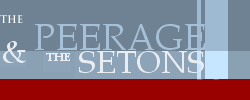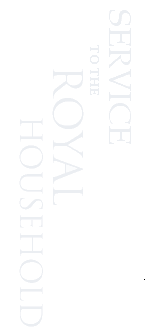The Use of Seals
Early documents were produced on parchment or vellum.
They were not printed but handwritten by clerks. Instead
of putting your signature at the bottom of a document or
letter as we would today, men of importance attached wax
seals to authenticate their papers.
 Notice
the seals attached to the bottom of the Declaration of
Arbroath. In 1320, a total of 46 Scottish earls and
barons attached their own seals to this document. Sadly,
as you can see, not all of them have survived today. Notice
the seals attached to the bottom of the Declaration of
Arbroath. In 1320, a total of 46 Scottish earls and
barons attached their own seals to this document. Sadly,
as you can see, not all of them have survived today.
The seal was the personal property of the user. In
medieval Scotland, seals were used mainly by kings,
bishops and the nobility. Designs on seals included
monarchs seated on their thrones, bishops surrounded by
saints, castles, ships, or coats of arms. The earliest
surviving seal of a king of Scotland is that of Duncan
II, 1093-94, who is depicted on horseback.
Seals
attached to The Declaration of Arbroath
NAS: State papers SP13/7
The design for a seal, called a matrix, was usually
carved in lead. More elaborate matrices were sometimes
engraved in ivory, jet or soapstone. The wax impression
of the seal was made from the matrix. The wax was warmed
to soften it and then pressed carefully into the
engraved design. The back of the wax was then moulded to
shape. If it was a two-sided seal, each matrix had a
flat back so that the two sides of the seal matched
exactly and could be pressed together either by force of
hand or a seal-press.
Seals were generally impressed in beeswax to which
some resin was added to make it stronger. Early wax
seals were uncoloured but later, verdigris was added to
make green wax and vermilion to make red. Some seals on
charters issued by the royal chancery in Scotland were
also varnished.
There were three ways to attach a seal to a document:
- suspend it on a cord, woven band or strip of
parchment called a tag that would pass through holes
or slits at the bottom of the document folded back for
added strength
- attach the seal to a strip of parchment called a
tongue that was cut away from the bottom of the
document and left to hang
- the seal was applied to the document with wax
When a great number of seals were attached to a
document, as in the case of the Declaration of Arbroath,
tags or cords were used. Such a variety of seals
provides us with useful information about the particular
people involved. The study of seals is called
sigillography. | 
